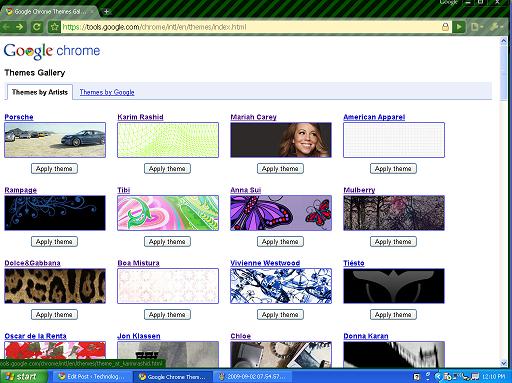 A few months ago I wrote a post lambasting Google for soliciting artist work without financial compensation. The situation, to recap, was that Google approached well-known illustrators to design nifty new artist skins for the Google Chrome browser. The catch: Google offered to compensate the artists with only exposure. In my mind, the offense was as follows:
A few months ago I wrote a post lambasting Google for soliciting artist work without financial compensation. The situation, to recap, was that Google approached well-known illustrators to design nifty new artist skins for the Google Chrome browser. The catch: Google offered to compensate the artists with only exposure. In my mind, the offense was as follows:
Google chose artists because they were highly-recognizable and then was unwilling to financially compensate them what Google obviously is aware that they are worth. In so doing, Google sent the message that artists, no matter how successful, are not worth paying. Thus, the undervaluing of the arts (against which artists constantly struggle) was publicly perpetuated by a wealthy company that could have afforded to pay for artists' work.
A few weeks ago the new Google Chrome skins launched--and the result is underwhelming at best. Google apparently regards all its "Artists" as brands--and vice-versa--and assembled a page featuring everything from sports cars to architects, from haute couture to hip-hop bands. The Artist Themes library reads like an advertising pull-out in a magazine: smaller, niche artists vie for attention against the top-billed Porsche, American Apparel, Mariah Carey, in addition to other such easily-recognized names as Donna Karan, Marc Ecko, Wes Craven, Ocean Pacific and Candies (among others). Each theme is presented with a button navigating to a one- or two-sentence blurb about the artist/brand/company (including, in many cases, a link to the artist's store where the user can purchase products) and most of the skins feature a brand logo somewhere in the skin itself. Artists who are less commercial and have less name-recognition are lost in the shadow of the BIGBRANDNAMES. So what exposure, exactly, is Google offering its skin-designing artists whose names don't ring an immediate bell with the General Public? I hope that they are receiving more interest from people who might not otherwise have known their art, and ultimately generating more sales and commissioned work. I hope that they find they are growing their audience and that people unfamiliar with their work before Google Chrome now are interested in what the artist is producing.
In truth, however, I suspect that one of two things is happening: they are overshadowed by the highly-recognizable brands, or reach an audience that was already aware of their work. If Google had not piled these artists into a motley assortment of brands, designers, products, and artists, I believe that those artists with more specialized popularity would have received greater exposure, and thereby reached a broader audience of new followers and potential financial supporters for their work. (Though of course, I may be erroneously assuming that these artists WANT to add new fans to their audience--perhaps they don't.)
Operating under the assumption that each designer wants to increase site traffic and popularity, reaching Chrome users who might have otherwise been unfamiliar with their work, I would recommend that Google redesign the Themes page. Arranging the contributors in alphabetical order, for a start, would give a sense of order and artist equity. To take it one step further, I think that calling the page an "Artist Gallery" is a misnomer, and Google would have done better to segment its collection of skins into tabs like "Music," "Fashion," etc, thereby bringing more attention to each skin--and reach people who may be more interested in certain artistic genres. Additionally, Google could have routed skin downloads through the artists' bio page by default, truly offering the opportunity to generate traffic to the individual (or company) site.
I am interested to know about the arrangement between companies such as Porsche and Google--were there really no financial negotiations? Did the designer of the skin get paid by Porsche, instead? I reached out to a couple of the participating artists to learn about their experience working with Google, and whether or not Google ended up financially compensating them after all--but at this time none has responded. So, Chrome Theme designers, if you read this I'd love to have you weigh in on the matter.
And, as always, I encourage anyone reading to share your thoughts.
